Inlaid metal candlestick-base, mid-13th century AD,
Ayyūbid Jazīrah, Coll. of Dr. P. Costa (NC).
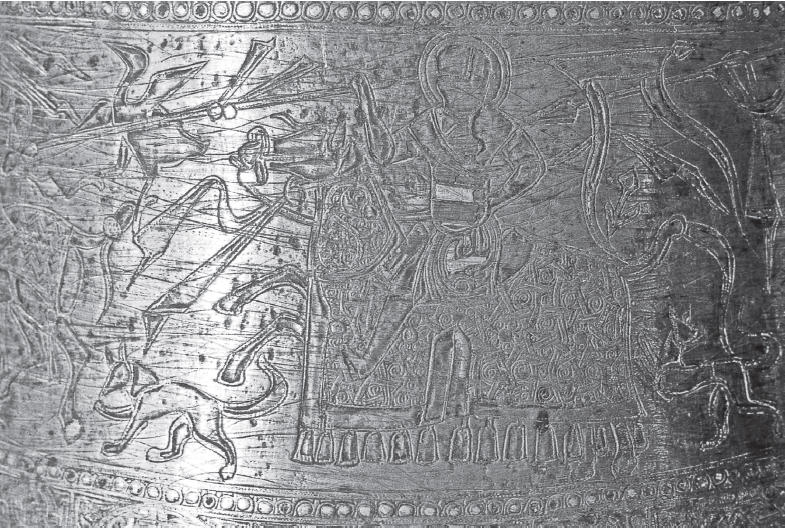
Side 1 I
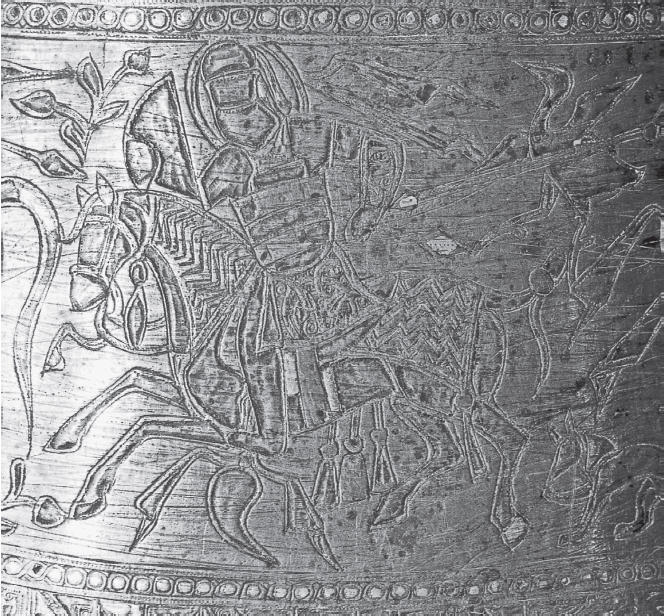
Side 2 G
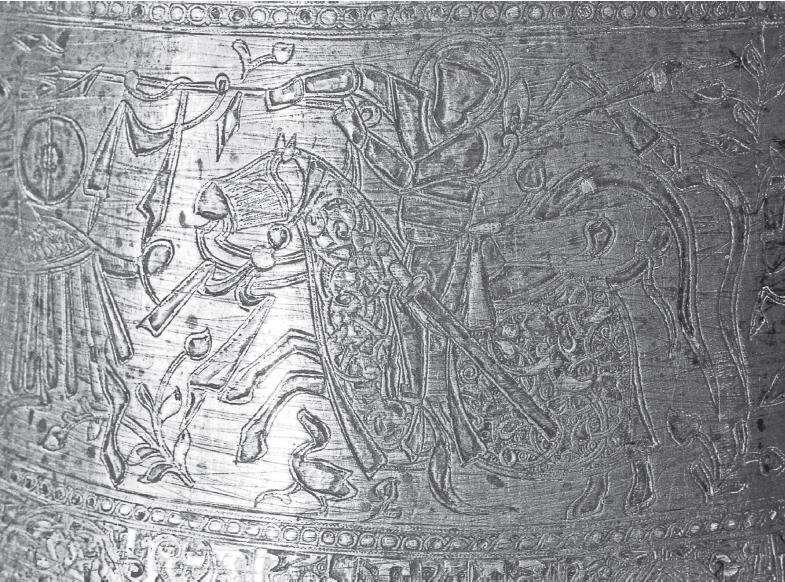
Side 3 H
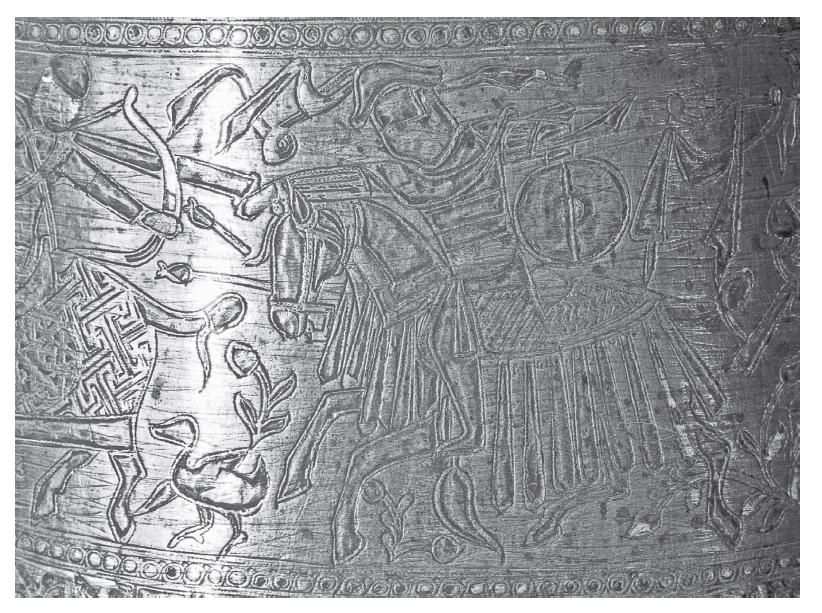
Side 4 A
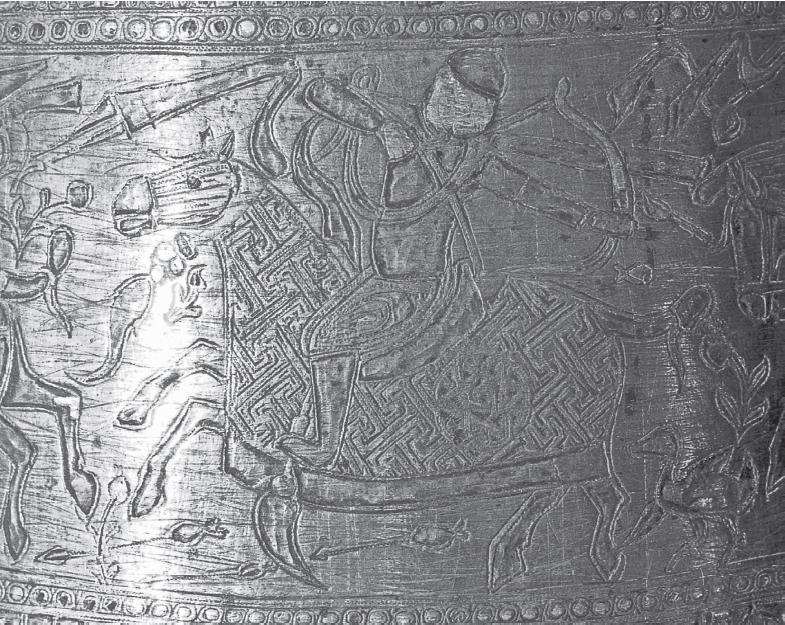
Side 5 E
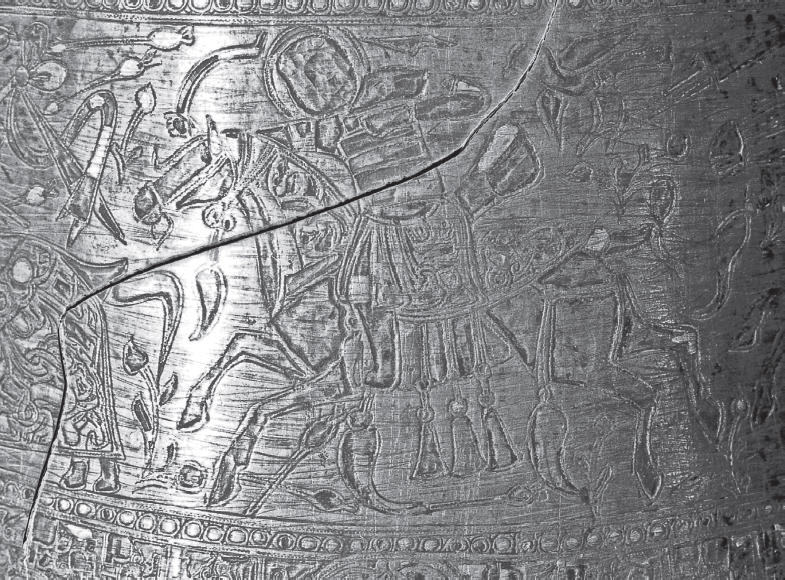
Side 6 D
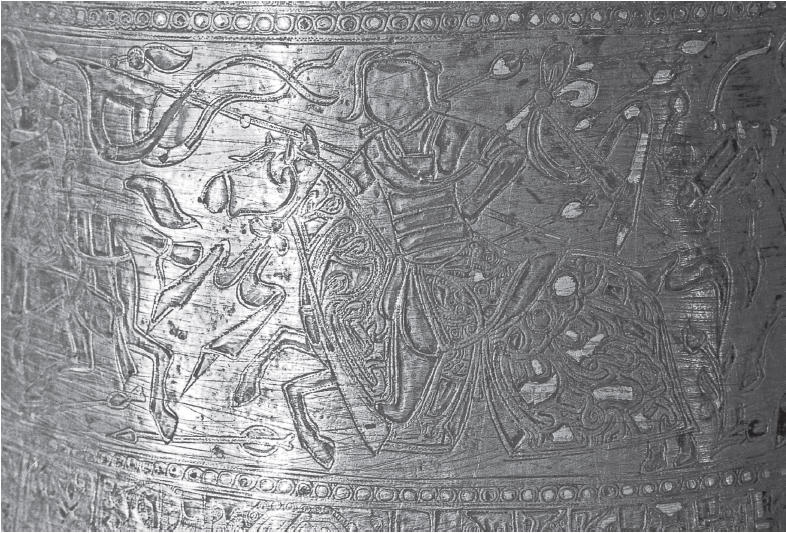
Side 7 B
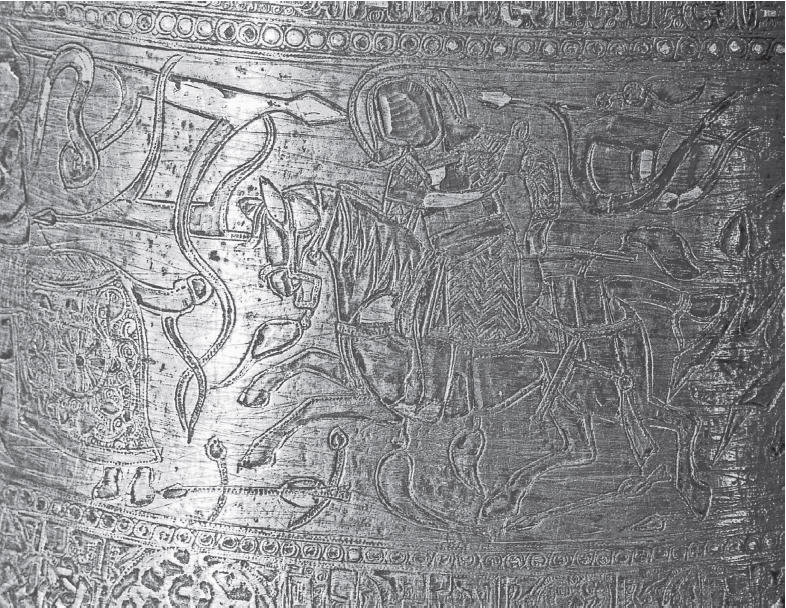
Side 8 F
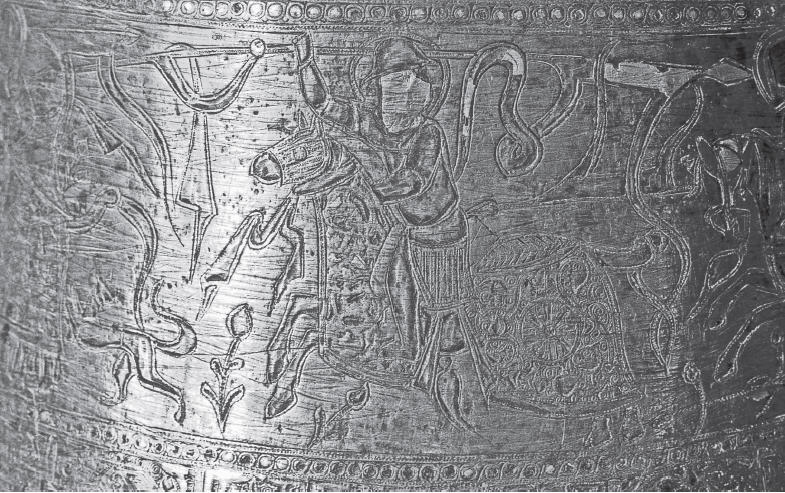
Side 9 C
Professor Costa’s candlestick-base was purchased by the Qatar Museums Authority and is now understood to be in the Museum of Islamic Art in Doha.
...
In my opinion, however, a much more likely dedicatee was a similarly named but short-lived and far less prominent ruler of Mosul,
Masʿūd Ibn Arslan Shāh al-Malik al-Qāhir ʿIzz al-Dīn (Masʿūd II), who reigned, at least nominally, from 1211 to 1218.
Source: The Iconography of a Military Elite: Military Figures on an Early Thirteenth-Century Candlestick by David Nicolle
E & H are referenced on p.6, MAA - 259 - The Mamluks - 1250-1517 by David Nicolle
A little known inlaid bronze candlestick-holder shows late Ayyubid or early Mamluk cavalrymen fighting with various weapons. Some ride elaborately caparisoned horses which also have chamfrons to protect their heads. Here a horse-archer carries no other weapon and has no visible armour, whereas the trooper with a long lance also has a sword and a lamellar jawshan cuirass. (Private coll., Rome, author's photo).
Referenced as figure 300 in The military technology of classical Islam by D Nicolle
300. Inlaid metal candlestick-base, mid-13th century AD, Ayyūbid Jazīrah, Coll. of Dr. P. Costa (NC).
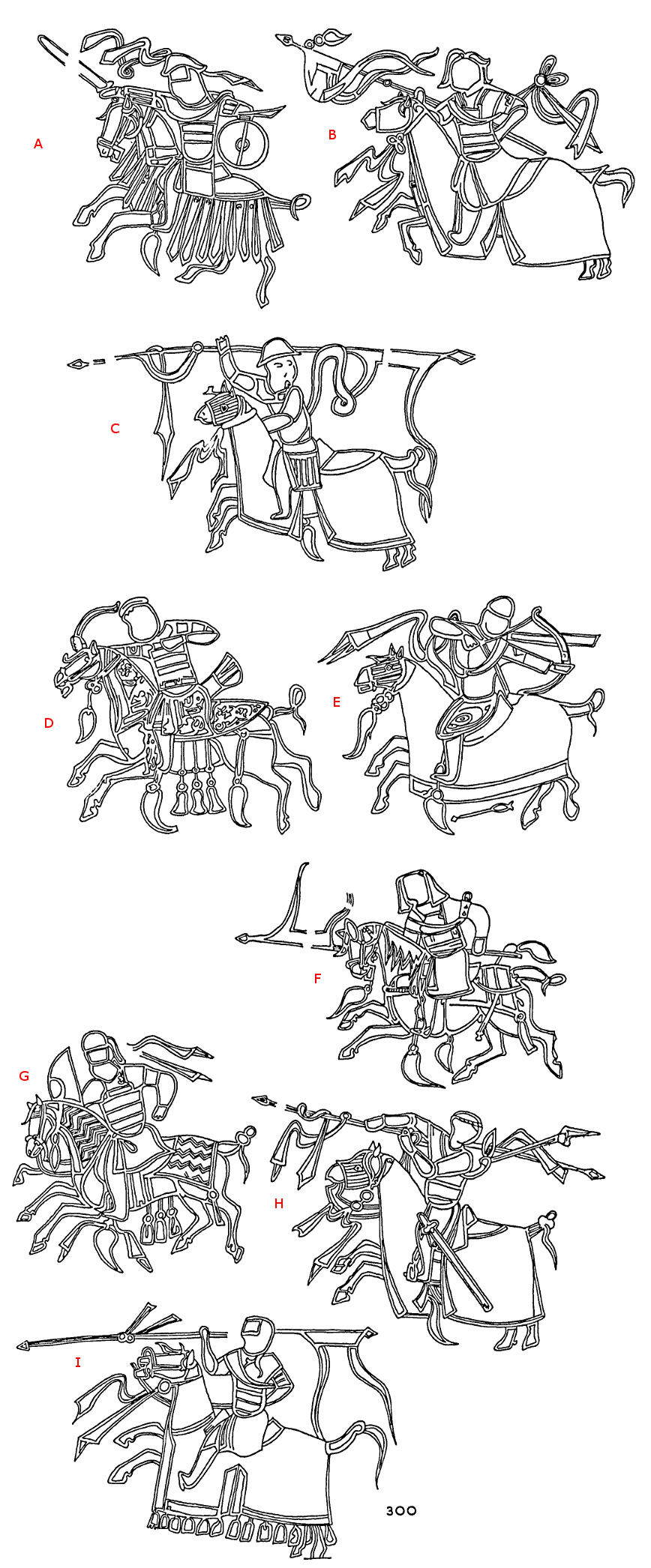
|











